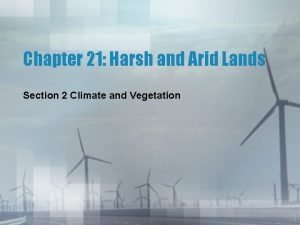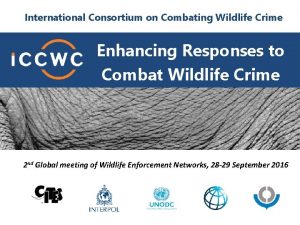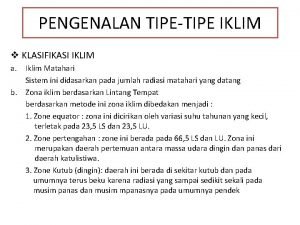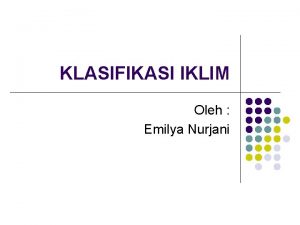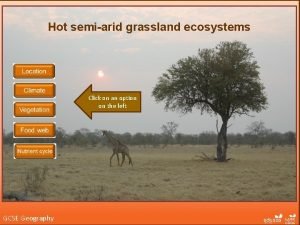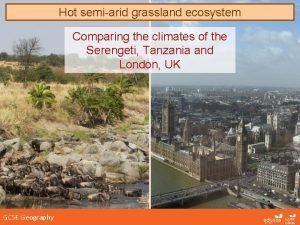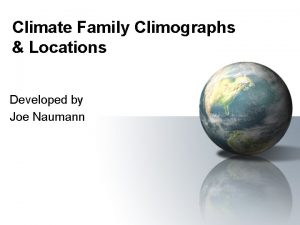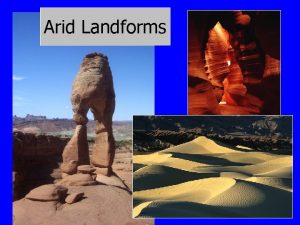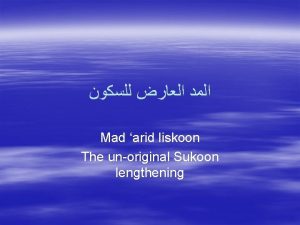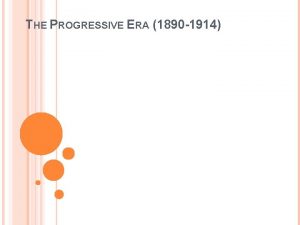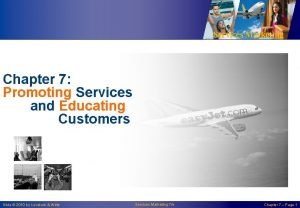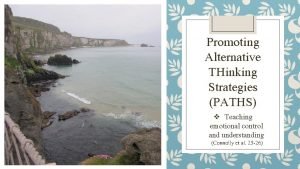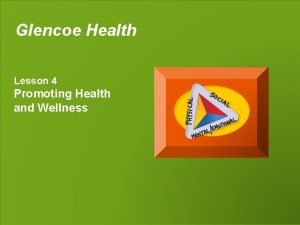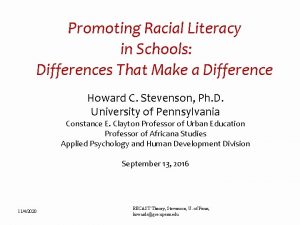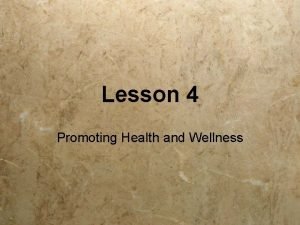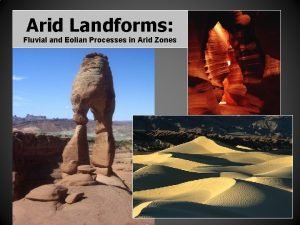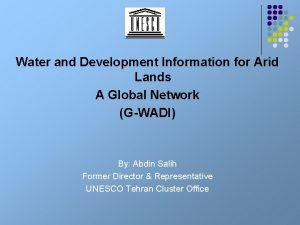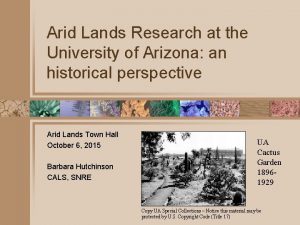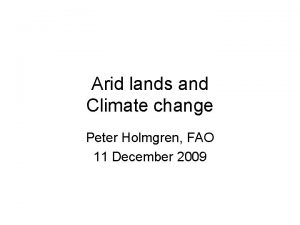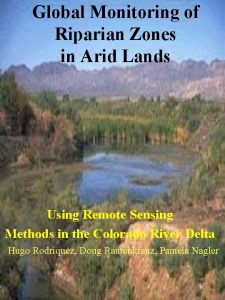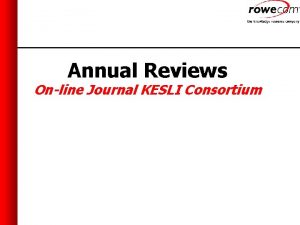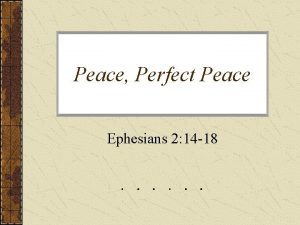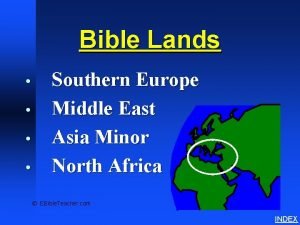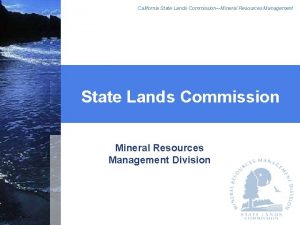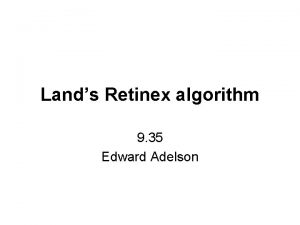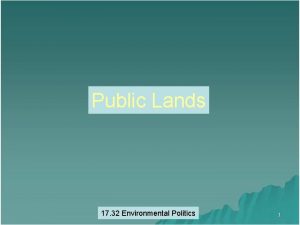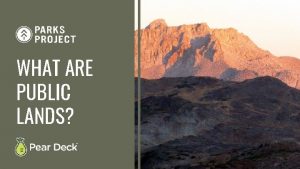INTERNATIONAL ARID LANDS CONSORTIUM IALC Promoting Peace Through




















- Slides: 20

INTERNATIONAL ARID LANDS CONSORTIUM (IALC) Promoting Peace Through Collaborative Research and Development

Formed in 1989 as an independent, non-profit organization Authorized by Congress in the 1990 Farm Bill & reauthorized in 1995 and 2008 Collaborative partnership Seven U. S. universities & institutes Jewish National Fund Higher Council for Science & Technology, Jordan

Goal: to empower families, entrepreneurs, The IALC: communities, and governments in arid lands around the world to create a healthy, safe, and prosperous future for all citizens Carries out research, demonstration and development projects in collaboration with host countries Facilitates development & capacity building using a research, evidencebased approach Works for sustainable solutions to challenges associated with food, land, and water resources

IALC Administrative Strengths Large pool of tested expertise from thousands of faculty, scientists, and extension personnel Demonstrated administrative capability to manage & implement international initiatives with a variety of donors Successful management and implementation of competitive grants program Provides simple and accountable management and authority line for program implementation

IALC Development Program Areas of Concentration Natural Resource Management Water Resource Management Food Security Human Capacity Development Business Management and

IALC Funding for Projects Since 1993, IALC received approximately $20 M – the majority received directly from the U. S. Congress These funds were used to support more than 130 research, demonstration and development projects among IALC members and their collaborators The IALC also funded 10 seed

Example IALC Natural Resource projects: Ecosystem consequences of cheatgrass invasion (invasive species) Dryland vegetation dynamics and landscape vulnerability to wildfire Predicting seed bank

Example IALC Water Resource Management projects: Land application of wastewater for creation of man -made forests Sustainable ground-water management system from decreased nitrogen use Arid lands water resources

Example IALC Food Security projects: Subsurface drip irrigation for vegetables using effluent Dought-responsive genes in populations from desert habitats Water conservation through drip irrigated alfalfa cropping

Example Human Resource Development projects: Integrated tech transfer: soil management for erodible lands GIS as a decision-making tool for rangeland restoration Technical courses: soils management, irrigation practices, extension

Example IALC Business Management & Marketing projects: Assessment of reintroduction of dromedaries as a livestock species for transport for Jordan’s Bedouin Exploring options for growth and sale of pulpwood on

In 2000, the collective expertise of the IALC supported an extensive USAID initiative: “Sustainable Development of Drylands in Asia & the Middle East” (USAID Cooperative Agreement; 2002 -2010) Improved use and re-use of water at the farm, community, and regional levels Human and institutional capacity development in agriculture and conservation Technologies to support sustainable arid lands development Countries: Yemen Pakistan, Afghanistan, Jordan &

Sustainable Development of Drylands in Asia & the Middle East http: //global. aces. uiuc. edu/afghanistan

IALC Sustainable Development of Drylands in Asia & the Middle East Human Capacity Building Accomplishments (UIUC) Northwest Frontier Province Agricultural University, Peshawar, Pakistan Kabul University, Nangarhar University, Balkh University, and Ministry of Agriculture, Afghanistan 400+ persons trained (train-the-trainers methods); including 44 women 23 technical courses conducted 24 scientists trained 10, 000 textbooks distributed

IALC Sustainable Development of Drylands in Asia & the Middle East Library Rebuilding Project in Afghanistan (2003 -07) Phase 1: Created the first academic electronic library in Afghanistan, Kabul University, Faculty of Agriculture Phase 3 : Expanded to Nangahar Province Phase 2: Trained field coordinator, installed additional equipment, planned for expanded electronic library rebuilding including regional universities

Hashemite Kingdom of Jordan Projects USAID “Sustainable Development” Projects Management Practices of Sludge & Biosolids Development of Anaerobic Watershed Treatment Technology Biosolids Application to Farm and Rangelands Development of Biosolids Treatment Methods Six re-vegetation and community development projects (IALC competitive grants program) NSF-funded Project Planning Workshop: “Understanding Coupled Natural-Human Systems: Community-based Rangeland Rehabilitation in Jordan’s Badia” (September 2010)

IALC Past MOUs Ben-Gurion University of the Negev Jacob Blaustein Institute of Desert Research Hashemite Fund for Development of Jordan Badia (HRDB) Center for Middle East Peace and Economic Cooperation Center Middle East Water and Energy Resource Institute (MEWERI) Desert Research Foundation of Namibia San Diego State University Foundation

The IALC is transitioning to a new model of competitive grants and strategic initiatives with collaborators around the world

Please Visit the IALC at: http: //ialcworld. org

Thank you! Questions?
 Chapter 21 harsh and arid lands
Chapter 21 harsh and arid lands International color consortium
International color consortium International consortium on combating wildlife crime
International consortium on combating wildlife crime Iklim arid dan humid
Iklim arid dan humid Iklim af
Iklim af Hot semi arid grassland
Hot semi arid grassland Hot semi arid grassland climate
Hot semi arid grassland climate Arid region with sparse to almost noneexistent vegetation
Arid region with sparse to almost noneexistent vegetation Climograph for tropical rainforest
Climograph for tropical rainforest Arid landforms
Arid landforms R madarid
R madarid Interreligious and international federation for world peace
Interreligious and international federation for world peace When was the progressive era? *
When was the progressive era? * Promote service arrange decide
Promote service arrange decide Promoting alternative thinking strategies
Promoting alternative thinking strategies Chapter 1 lesson 4 promoting health and wellness
Chapter 1 lesson 4 promoting health and wellness Promoting family earthquake preparedness
Promoting family earthquake preparedness Chapter 1 understanding health and wellness lesson 4
Chapter 1 understanding health and wellness lesson 4 Promoting racial literacy in schools
Promoting racial literacy in schools Lesson 4 promoting health and wellness
Lesson 4 promoting health and wellness Leaving cert business philip curry
Leaving cert business philip curry
